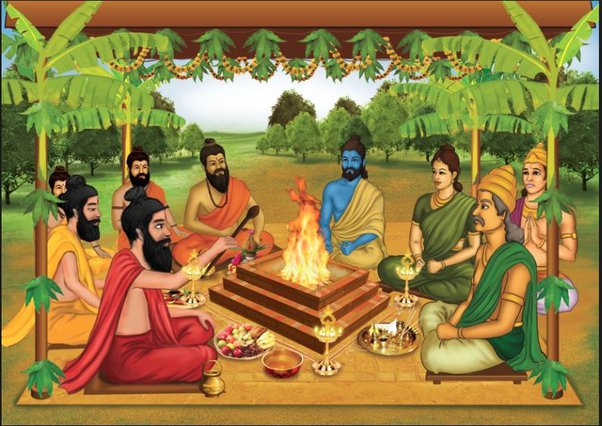It is normally stated, nowadays even more pronouncedly, that rituals are a waste of time and money. However, it’s at best a secular thought and, at worst, a thought devoid of any thinking. Humans cannot live without rituals. It is rituals that give meaning and joy to human life. Even secular governments have to live by rituals like the Republic Day parade in India and other shenanigans that have zero economic and social value. Every major religion, be it Islam, Christianity, or Buddhism, has hundreds of rituals. The more ancient the religion, the more prolific the rituals will be.
In ancient times, Hindus were into Vedic rituals, which were used to imitate the act of creating the known universe. The most important ritual was yajna in Agnikund, which was used to offer sacrifices, both animals and plants, to appease the gods for a variety of purposes. It was this ritual that spawned numerous advancements in science, maths, and other arts.
It is well known that geometry was pursued in India in the context of the construction of vedis for the yajnas of the Vedic period. The Sulvasutras contain elaborate descriptions of the construction of vedis and enunciate various geometric principles. The mathematicians were aware, among other things, of what is now called the Pythagoras theorem, over 200 years before Pythagoras.
- Astronomy and Astrology: Yagnas required careful observation of the various planetary movements and positions to find the auspicious time. This observation led to the development of astronomy and mathematical models to predict celestial events, such as eclipses, with remarkable accuracy. Astronomy then diversified into astrology to predict the future.
- Mathematics: Agnikund had many geometric shapes to suit the purpose. Square, rectangle, rhombus, and even falcon-shaped designs were used. The ritualistic use of geometric patterns, such as the mandala, yantra, and kolam, required an understanding of complex geometric principles. This led to the development of geometry and trigonometry in ancient India, as evidenced by texts like the Sulba Sutras, which contain geometric constructions for ritualistic purposes.
- Understanding of Time and Calendars: The rituals often involve precise timing based on astronomical events and cycles to determine the most favorable time. This necessitated the development of calendars and a sophisticated understanding of timekeeping, which contributed to the field of chronology and the development of sophisticated calendars like the Hindu calendar. At the time of independence, as many as thirty different calendars were prevalent in different parts of the country.
- Sound and Music: The rituals involve the recitation of mantras and the use of music and sound in worship. This led to the study of acoustics and the development of musical scales and systems of notation, contributing to the field of musicology.
- Understanding of Natural Phenomena: Many Hindu rituals are based on the worship of natural elements such as fire, water, and earth. This led to a deeper understanding of these elements and their properties, contributing to the fields of chemistry and natural sciences.
- Development of Medicine: Many medicinal herbs and plants used in Hindu rituals have been found to have medicinal properties. The study of these properties led to the development of Ayurveda, a system of traditional Indian medicine that continues to be practiced today. The yagna also seems to have accelerated the process of seed germination, and the microbial presence in the air, water and soil in and around the region of the fire ritual is vastly diminished.
- Grammar: The mantras required the correct meter to sound good. This led to almost perfect Sanskrit grammar. Panini wrote Aṣṭādhyāyī, an encyclopedia, and is labelled as “the father of linguistics.”
In later years, when Buddhism and Jainism shamed and rejected Vedic rituals, the progress in science was considerably diminished. However, the main effect of these religions was that Hindus were fed the unhealthy and cowardly concept of Ahimsa.
Overall, ancient Hindu rituals catalyzed scientific and mathematical inquiry in ancient India, laying the foundation for many of the advancements that would later shape the course of scientific and mathematical thought around the world. These achievements were later stolen by the Arabs, and from them, Europeans ‘borrowed’ wholesale.
—— Written by Amit Agarwal, author of the bestsellers on Indian history titled “Swift Horses Sharp Swords” and “A Never-Ending Conflict.”
Follow the author on social media handles X: @amit1119; Instagram/Facebook: amitagarwalauthor
- How Hindu rituals spawned numerous advancements in science, maths and other arts - March 13, 2024
- Naga Sadhus and their fighting skills - February 20, 2024
- Lessons for India from the Israel-Palestine conflict - October 12, 2023

